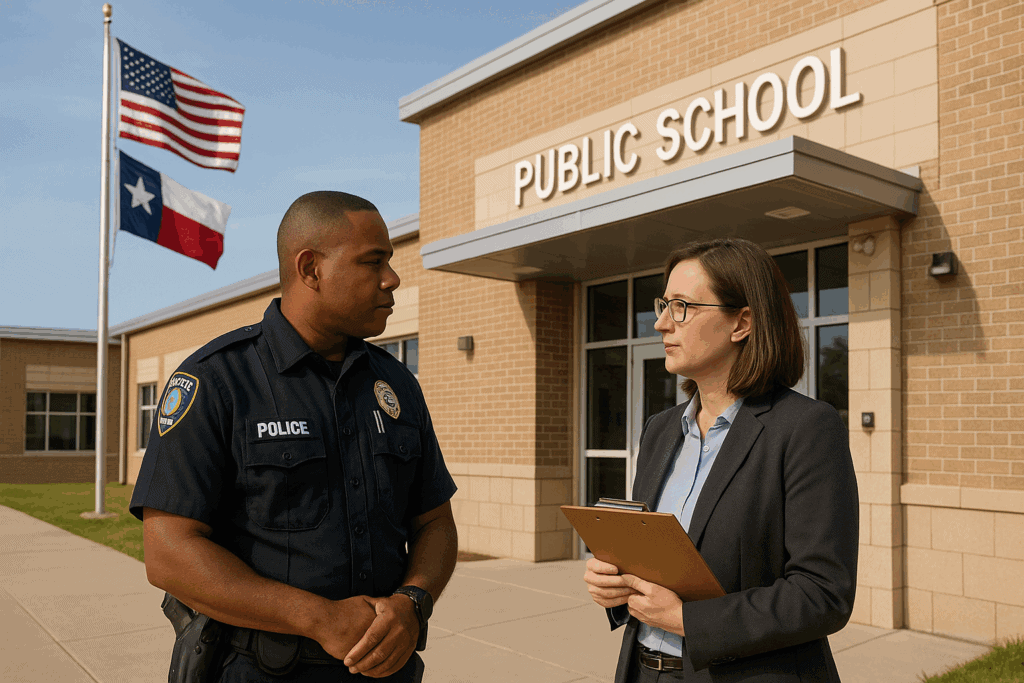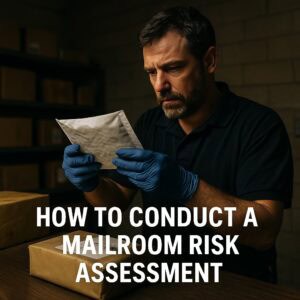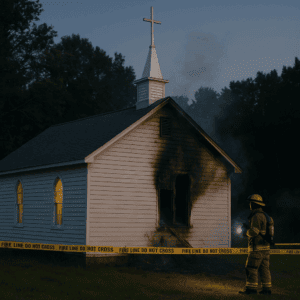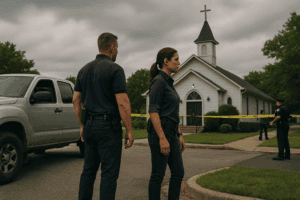What is House Bill 33 (HB 33)?
Disclaimer: This article is for informational purposes only. It does not constitute legal advice. Districts should consult with legal counsel or their regional ESC to ensure full compliance with HB 33.
House Bill 33 is a new law in Texas that takes effect on September 1, 2025. It was passed in response to documented school safety failures and sets stricter standards for how schools and law enforcement respond to active shooter threats.
The law applies to:
- Public school districts (ISDs)
- Charter school networks
- Junior college districts
It covers things like tactical gear, officer training, school drills, and building safety reviews. Even if your district doesn’t have its own police department, you’re still responsible for making sure officers on your campuses are trained, equipped, and part of your emergency plan.
This guide’s goal is to explain what’s required and how to prepare.
New Requirements for District Leadership
Maintain a Compliant Emergency Operations Plan (EOP)
Every school or college district must have an Emergency Operations Plan that reflects current response standards. Your plan should follow ALERRT-based active shooter response strategies. That means law enforcement is expected to move quickly and stop the threat, even if they arrive alone.
You also need to hold a yearly meeting with your local police or sheriff’s office, DPS, and EMS. This is required under Texas Education Code § 37.108(a-1). The goal is to make sure everyone understands the plan and their role in it.
Run a Full-Scale, Integrated School Safety Drill
Once a year, your district must run a large-scale drill. It has to include police, EMS, and campus staff. This drill should simulate a realistic emergency, such as an active shooter or major threat on campus.
After the drill, you’ll need to write an After-Action Review (AAR). The AAR should document what went well, what needs improvement, and how the district will address those gaps. Keep a copy on file for your next safety audit.
Confirm Officer Training and Gear Access
If your school or college district has assigned SROs or works with law enforcement, you need to confirm they’ve completed the right training. This includes ICS-100, NIMS-700, and an ALERRT-based active shooter course.
You also need to make sure they have access to the right gear:
- Rifle with optic and light
- Rifle-rated shield
- Level IV body armor
- Breaching tools
- Bleeding control kits
If the agency doesn’t have enough gear on its own, it can enter a mutual-aid agreement with another department. As a district, you must get a copy of that agreement (MOU) and keep it on file as proof of compliance.
Facility Construction or Renovation Compliance
Mandatory Security Review (§ 37.1087)
If your school or college district builds, buys, renovates, or improves any school facility, you’re now required to conduct a security review.
This review must evaluate:
- How the building would hold up in an active shooter event
- Whether it meets current safety and security standards set by TEA, the Texas School Safety Center (TxSSC), and the Department of Public Safety (DPS)
If there are any identified security gaps, such as blind spots, unlocked access points, or a lack of secure entries, etc., you need to document each one and describe how the district plans to fix it.
This isn’t optional. It applies to all new construction, major repairs, or remodels, no matter the funding source.
Keep records of every review and mitigation plan as part of your safety documentation.
Documentation and Oversight
You must keep clear records to show you’re following the law.
That includes:
- Drill schedules and After-Action Reviews (AARs)
- Signed MOUs with law enforcement partners
- Training logs for all assigned officers
- Copies of mutual-aid agreements and gear inventories
Work with your partner law enforcement agency to make sure officer training records are uploaded to TCLEDDS. This is the official state system for tracking peace officer credentials.
If your school or college district builds or renovates any facility, add the security review to the project file. This shows you assessed vulnerabilities and planned fixes, as required.
Both the Texas School Safety Center (TxSSC) and TEA may request to review your documentation. If they do, you’ll need to produce these files quickly.
Timeline to Compliance
| Quarter | Task |
|---|---|
| Q3 2025 | Review/update EOP; schedule drill; coordinate with PD/SO |
| Q4 2025 | Complete officer verifications; collect MOU and gear compliance docs |
| Q1 2026 | Run full-scale drill; finalize AAR |
| Q2 2026 | Document security review for any facilities built or improve |
Funding & Resources
If your school or college district operates its own police department, you may qualify for an HB 33 Accreditation Grant.
This provides $25,000 for first-time accreditation or $12,500 for renewals. The funds can be used to help cover training, equipment, or policy development.
Districts without their own PD can still benefit. Your law enforcement partners may be able to use their grant funds to purchase gear, like shields or breaching tools, that also supports your campuses.
Free resources are available through the Texas Education Agency (TEA), Department of Public Safety (DPS), and Texas School Safety Center (TxSSC). These include training guides, policy templates, and planning checklists. Use them to make sure your documents are up to standard.
Common Mistakes to Avoid
Relying solely on law enforcement to run drills
Districts are responsible for making sure full-scale safety drills happen each year. Police and EMS should be involved, but the district must lead the planning and ensure it fits into the broader safety program.
Skipping the security review during construction
Any new building, renovation, or facility upgrade requires a documented security review. This step is often missed if the project is handled by facilities or other teams without input from safety staff.
Failing to track SRO training and equipment
Even if SROs are employed by a police or sheriff’s department, the district must verify their training is current and that they have access to required gear. Without written proof or a signed mutual-aid agreement, the district may not be in compliance.
Bottom Line for Districts
Even if your district doesn’t have its own police department, you’re still responsible. The officers on your campuses must be properly trained. They need the right gear, and your buildings must be secure. Your staff must know how to respond in a crisis.
House Bill 33 moves liability to the planning stage. That means if something goes wrong, the question will be: Did you plan for it?
Don’t wait. Get your plans, training, and documentation in order now.
Need help getting compliant with HB 33?
Risk Strategy Group can review your EOP, verify officer readiness, and support full-scale drill planning.






